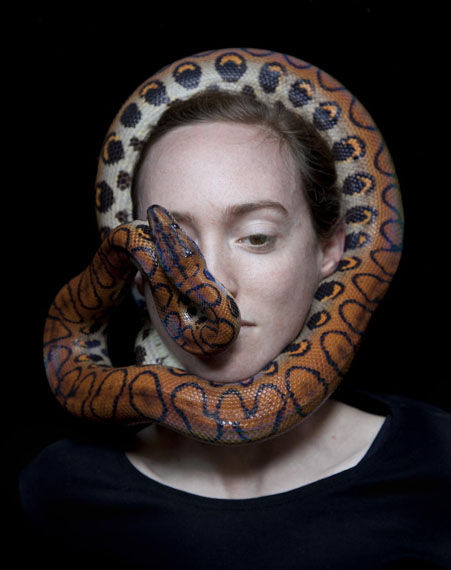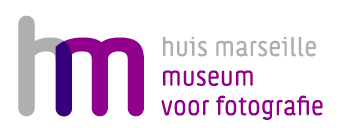
Juul Kraijer,
2013
The rediscovery of the world
Large inaugural exhibition in a double-sized Huis
Popel Coumou » Elspeth Diederix » Eddo Hartmann » Scarlett Hooft Graafland » Juul Kraijer » Tanya Long » Katja Mater » Maurice Scheltens & Liesbeth Abbenes » Ilona Plaum » Viviane Sassen » Awoiska van der Molen » Emma van der Put » Hellen van Meene » Simon van Til »
Exhibition: 7 Sep – 8 Dec 2013
Sat 7 Sep 16:00 - 19:00

Huis Marseille
Keizersgracht 401
1016 EK Amsterdam
+31 (0)20-5318989
info@huismarseille.nl
www.huismarseille.nl
Tue-Sun 11-18

Four Elements, 2010
c-print
The rediscovery of the world
7 September - 8 December 2013
First large-scale exhibition in a double-sized Huis Marseille opens on 7 September 2013
An exhibition on using the intrinsic strengths of an artistic medium to fathom external reality: fourteen galleries, fourteen artists, and more than 130 extraordinary photographs
Also on show at Huis Marseille: the series Subversion des Images by Paul Nougé (1929)
From 7 September 2013 Huis Marseille will be made up of not one, but two adjacent canalside merchant’s houses linked together by three passageways on different floors. From that day on it will be possible to stroll through no fewer than fourteen galleries, including a most remarkable (scarlet!) period room: one of the very few Louis XIV-style reception rooms to have remained in such original condition in Amsterdam. After a year-long building project led by LEVS Architecten, the moment has arrived to open the new, double-sized museum with a large show. What better way to do this than with a celebratory exhibition on a new spirit in photography itself?
A new spirit
In a Huis Marseille whose total exhibition area has effectively doubled, the exhibition The rediscovery of the world shows that Dutch photography has embarked on a new voyage of discovery. A passion for looking, and for the experience of the properties of the medium is abundantly present in the work of the photographers on display. The fourteen artists are in their mid-twenties to early forties, a generation that grew up immersed in a visual culture that was an inherent part of the modern world. And it is precisely these photographers who are now formulating a reaction to the ‘culture of invisibility and virtual communication’ by looking at the world in an entirely new way. Interestingly, this is quite a challenge for photography; after all, isn’t photography easy and accessible to all? Isn’t it thanks to visual culture that the world has become visible to everybody? It is, but at the same time we must ask: do the images that flit constantly across our screens give a true impression of reality in a society in which most processes are invisible? In short: what is still ‘real’ today?
For photography this last question would seem to be the most relevant. The medium registers exactly what there is to see – but what exactly is it, then, that we see? The question looms large in the shared mindset of The rediscovery of the world. If anything characterises the artistic idiom of photography today it is a burning curiosity – a desire to visualise what lies behind the visible, and to reveal the component parts of which our perception is actually made and to examine how ‘real’ or ‘unreal’ that perception actually is. Notably, in this artistic research photography seems to be going back to basics: to the camera, the light-sensitive material, and the image bearer, the unique features of a medium being employed as an instrument of eager research.�

Untitled, 2003/2013
In Keizersgracht 399
In Keizersgracht 399 this photographic investigation takes a variety of forms. Eddo Hartmann took disconcerting photographs of his old family home, to which he had returned in unusual circumstances after 21 years to find part of his childhood entirely untouched by time – which he then photographed to help deal with his memories. Scarlett Hooft Graafland made new work in Madagascar, by creating images with an organic – and simultaneously magical – relationship with the landscape and people who live there. The poetic night-time landscapes of Awoiska van der Molen arose out of her desire to penetrate deeply into the core – and the deep darkness – of the remote worlds she photographs. Juul Kraijer, an artist best known for her monumental drawings, is showing no fewer than thirty photographs that appear to exist outside of time and material reality. They seem to have been created inside the artist’s head, in her own imaginary world, and in contact with everything that ever inspired her. Ilona Plaum takes the pointillist technique – using photographic means – to experiment with how we perceive time and space. Elspeth Diederix is showing work that came out of her artist residency on Curaçao in 2013. She investigated into the behaviour of colour under water, and discovered that the form and structure of corals were more important to their appearance than were their colour. The abstraction of this underwater world has effected the work that Diederix now makes above the waterline: colourful still lives whose form is crucial. Viviane Sassen photographed the Surinamese village of Pikin Slee, where people still live very close to nature, and documented the beauty of their everyday utensils in black and white. Finally, Katja Mater is pushing back the boundaries of photography itself, using it as an instrument with which to examine the various ways we can look at and think about photographic images themselves.
In Keizersgracht 401
Keizersgracht 401 is showing interiors, exteriors and natural landscapes by Popel Coumou. Her photographs have a very special and personal quality that arises out of her manual manipulations. The final image of her constructions, photographed with an analogue camera, has the feel of a place that exists only in her imagination. For the first time Popel is also showing the clay miniatures that form the basis of many of her photographs, as well as lightboxes of her own design. Scheltens & Abbenes are showing eyeshadow palettes; thanks to their visionary approach to still lives, they are elevated to the status of autonomous art. Simon van Til registers the world in itself. His work mirrors a world we know well, but may never really understand. Through the properties of analogue photography Simon van Til offers precise perspectives on the world while also reflecting on the nature of representation. Hellen van Meene makes still lives of clothing as if they were portraits. The work shown here was made very recently, in Ireland, and its mood suggests that the photographer is showing us more than what appears at first sight. The young photographer Tanya Long has created a dynamic photographic installation without using a camera. In the spirit of the exhibition there are photographs from 1929 by the Belgian surrealist Paul Nougé, made as part of his investigation into the working of the photographic camera. The young video artist Emma van der Put is showing the four video clips that she made on assignment from Huis Marseille to document the rebuilding of Keizersgracht 399 and 401 and preparations for the exhibition.
The camera as window
All in all The rediscovery of the world demonstrates that strong powers of imagination are at work in Dutch photography, and that there is a growing desire to use the medium of photography to discover, to see, and to know. Both sides of the photographic vocabulary – the registration of the world in itself, and its processing in the realm of the imagination – are on display. Is the photographic idiom of this exhibition new, then, and peculiar to our age? Certainly. But taken as a whole the exhibition is so diverse, the work of each individual photographer so characteristic, that no formal features of a ‘movement’ as such could be defined – except, perhaps, the special emphasis being given to the use of colour.
In The rediscovery of the world the inner power of an artistic medium is being employed in order to penetrate external reality. The great thing is that the resulting (re)discoveries are nourishing, in turn, the artistic core of photography.
Opening
The exhibition The rediscovery of the world will be officially opened in the newly double-sized Huis Marseille on Saturday 7 September 2013. We are honoured that Mr. Wim Pijbes, director of the Rijksmuseum, will be officiating. Huis Marseille will be opened to the public on 7 September from 4pm till 7pm.
Publication
The exhibition will be accompanied by the publication of a book with texts by Els Barents and Nanda van den Berg, giving an introduction to the exhibition, an introduction to the work of each participating artist, and an architectural and residential history of both buildings, with numerous illustrations.
The entirely renovated and expanded museum shop will be stocking numerous publications on the participating photographers.
Website extras
Our website www.huismarseille.nl already shows two of the four video clips made for Huis Marseille by video artist Emma van der Put of the rebuilding work and preparations for the exhibition. It also carries an interview with Hellen van Meene on her new work. New texts on the exhibition will be posted to the website on a regular basis.
Activities
Numerous activities, including workshops, tours and lectures, will be organised for the exhibition period, and there will be free quests for the youngest explorers to take part in. More information will be posted on the website very soon.
From 26 – 29 September Huis Marseille is part of the Unseen Photo Fair; see http://unseenamsterdam.com/amsterdam for more information.�

Turtle, 2013
c-print

Bedroom father with drawing on
wall, 2012
c-print